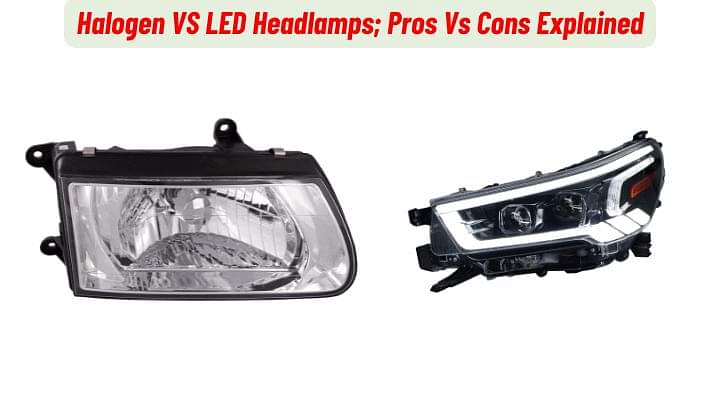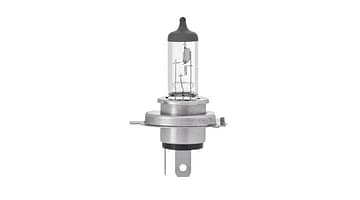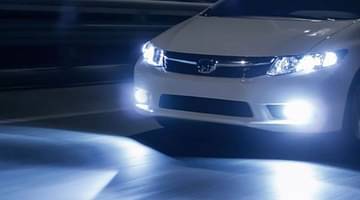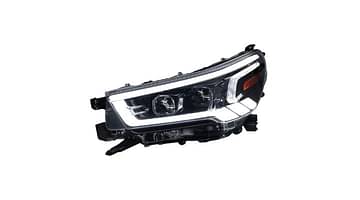
KEY HIGHLIGHTS
- Halogen headlights make use of bulbs and are easier to repair.
- Halogen headlights are also more effective in foggy conditions.
- LED headlights are more efficient and give off less heat.
- LED headlights are more complicated to replace.
LED headlights have become very popular the years, slowly becoming the choice of OEMs, especially in higher variants. If you remember correctly, until a few years ago, halogen headlights used to be the norm.
This does raise questions about halogen and LED headlights; which ones are better, why, and what are the benefits and disadvantages of choosing a type. Before moving on and learning more, make sure to join the 91wheels WhatsApp Community to keep up with the latest news and automotive updates.
Also read: New Motor Vehicle Fine Charges Implemented from March 1st
Halogen VS Led Headlights: Pros Vs Cons
Halogen Headlights

Halogen headlights are essentially small incandescent bulbs with a tungsten filament inside. The reason halogen headlights are known by this name is because these bulbs carry a dose of halogen gas inside them, unlike regular bulbs which come with a dose of argon gas. When electricity passes through the filament inside, it heats up and generates light, which is yellowish in colour, which should also explain why halogen headlamps glow yellow.
Pros Of Halogen Headlights:

These headlights are easy to repair and do not require much technical know-how or specialized tools. In most cases, one can simply swap out the fused bulb for a fresh one, and their prices are fairly low. Halogen headlamps also illuminate the road better in foggy conditions; their warm yellow glow helps cut through fog better, thereby improving visibility and also alerting oncoming drivers.
Cons Of Halogen Headlights
However, halogen headlamps are not very efficient, as a lot of the energy is converted into heat and they also require more energy for brighter illumination. These bulbs also have a shorter lifespan compared to LEDs, and one will probably need to change them more often.
Also read: New Maruti Dzire Now Available For Fleet Operators- Price Starts At 6.79 Lakhs
LED Headlights

Let us first understand the LED in LED headlamps. LED stands short for Light Emitting Diode, and these headlights produce light by passing electricity through a series of small semiconductors emitting photons.
Pros Of LED Headlights

LED headlights do not require much power to operate and are highly efficient. Unlike halogens, the LED headlight's energy is not lost in the form of heat. These headlamps run at full brightness almost immediately after switching them on, and they also last much longer compared to halogen headlamps, which make use of bulbs prone to fusing more often. They also allow more flexibility for customization, as OEMs make use of technology that can turn off specific LEDs, in order to not blind oncoming traffic or for welcome/goodbye signatures.
Cons Of LED Headlights
There are some downsides to LED headlights as well. In challenging weather conditions, LED headlamps are not the best since the white light tends to blend in instead of cutting through, especially when driving through fog. They are also far more complicated and costly in terms of repairs, as any fault or malfunction will require the entire headlamp unit/assembly to be taken off and replaced with a fresh new unit.
Also read: Shark Fin Antenna vs Traditional Antenna - What's The Difference?
Verdict
With most OEMs offering LED headlamps as standard on their cars and two-wheelers. the popularity of halogen headlamps is on a decline. While halogens continue to be offered on lower-spec variants of certain cars and bikes, most top-end variants come with LEDs, and with LEDs gaining more acceptance, the difference is only going to get slimmer.





















